O
ONE-TONNER
NO MODEL has done more to build our country than the mighty tonner. Half car, half truck, the one-tonner arrived with the HQ series in 1971 and remained visually unchanged until the end of the HZ series almost a decade later; surplus HQ panels and a bumper made from a steel girder is really all you need to ute. The tonner bowed out with the discontinuation of the WB in 1984, and a return as part of the herculean VYII range of 2003 was short-lived.
P
PIAZZA
Before you start, understand that the Giugiaro-styled Isuzu sports coupe promised so much: futuristic stying, flush glasshouse, digital gauges and a turbo! But Isuzu forgot the suspension and what we got was a sports coupe that handled like a Tamiya Grasshopper, tracked like a busted Betamax and cost twice as much as a VL Exec Turbo. It’s quite possible more were given away on Sale of the Century than were actually sold.
PREMIER
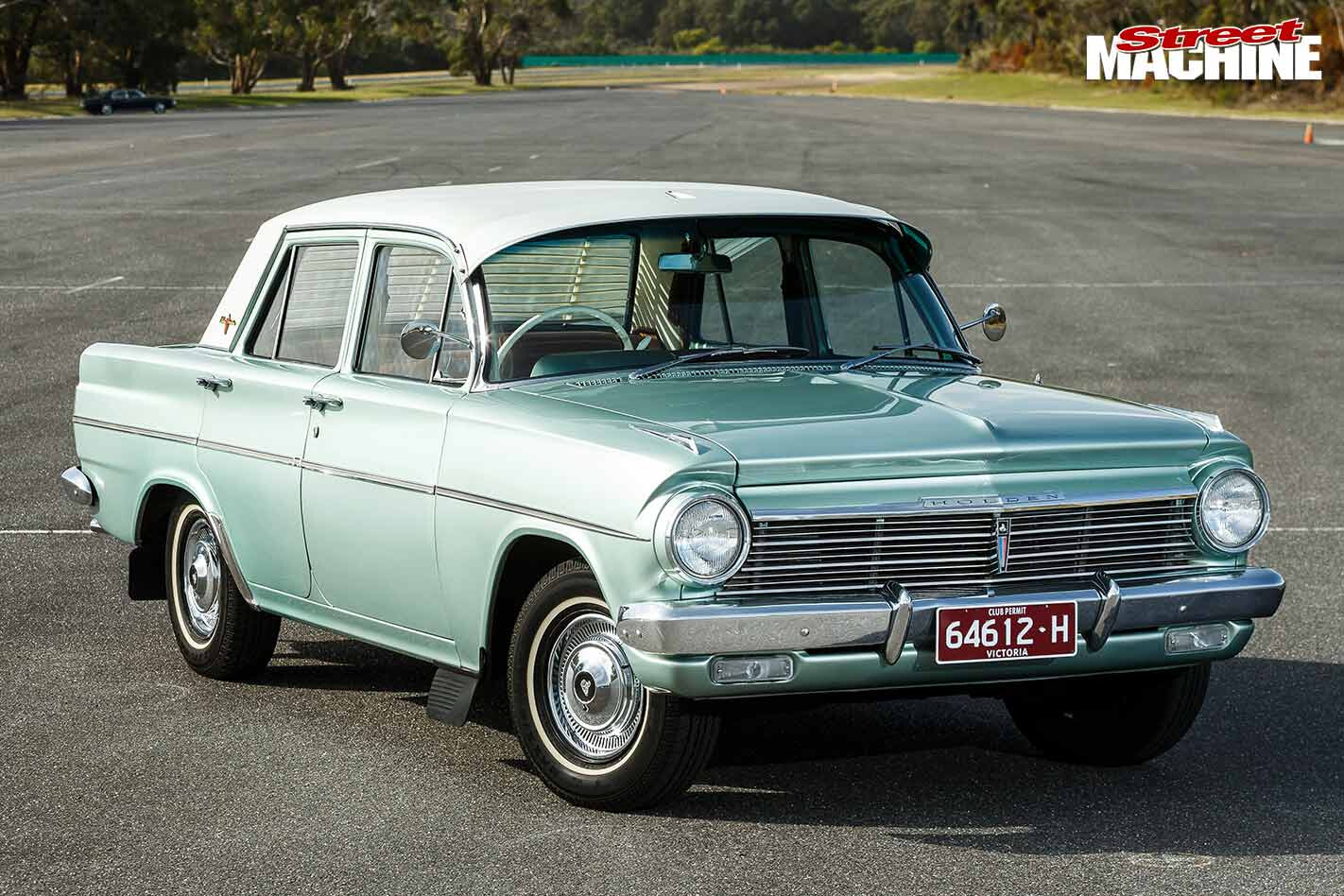
Upgrades like quad headlights, stainless-steel wheelarch mouldings, Air Chief AM radios and, uh, carpets don’t sound like much today, but in 1970s Australia, one of these rolling into your driveway was kind of a big deal.
Born with the EJ series of 1962, the Premier initially ran pimp-spec gold badges to differentiate it from the masses, and was used to celebrate Holden’s 1,000,000th unit, built in October of that year. The name lived on through the HD-HR series and into the Kingswood era, representing the top-of-the-range of the HK-T-G series, assuming you don’t count the Brougham, which despite long-wheelbase pretentions simply had a long boot.
Once Holden started playing the options game from 1968’s HK series, the Premier could be ridiculously specced. This continued through the HQ-HZ range; plenty of 5.0-litre Premier wagons escaped the factory. If you can find one that hasn’t been munted, get onto it; they’re classy muscle!
Q
Nope.
R
RAIDER
Pretty much the Indonesian-designed and built, rear-drive, Jackaroo-based Holden Lincah SUV, except only available in East Java for some reason. Possibly the most obscure Holden ever; we can’t even get one up on the Google.
RODEO
Holden’s Rodeo was a quiet achiever; replacing the Chev LUV/Isuzu KB in 1980, the little ute was available in a range of wheelbases and configurations, selling successfully (and rusting even more successfully) until the evergreen TF series of 1988.
The TF series is probably the Rodeo you think of if you ever think of a Rodeo; popular as a fourby and as a mini-truck (‘Lowdeo!’), it was surely the last car available in Australia with a chrome front bumper.
The third-gen, RA-series Rodeo didn’t have the visual charm of the TF, and when GM sold its share of Isuzu, it lost the rights to the Rodeo name; hence the Colorado model that we all know and Holden seems to love so much.
S
SANDMAN
With the youth of Australia moving into ‘lifestyle’ vehicles in the 1970s, it was only a matter of time before Holden got on board. Enter Sandman (sorry), which began as an option for the HQ panel van and ute. Incopulating, wait, incorporating a bunch of Monaro GTS parts like gauges, steering wheel, bucket seats and GTS ‘rally’ steelies, it proved a hit, especially in panel van form. The Sandman graduated to a fully-fledged model from the HJ series, copping more kit as the series rolled through to the HZ.
Holden brought the Sandman back as a Y2K concept car (above), painted by Mambo’s David McKay. It was followed by a run of 224 ‘vans’ (read: ute with rear canopy) by Holden By Design, available across the VYII and VZ utes.
Holden resurrected the name a third time, with a Sandman package being made available on a run of VF wagons and utes, although you couldn’t bone in privacy in the back of either of them.
SCURRY
Sourced from Suzuki, the Scurry was Holden’s answer to a question literally only asked in Japan. As cute as it was deadly, not even the stylish, graph paper-like quasi-grille shared with the Bedford Rascal could prevent your legs from being the crumple zones in the event of a catastrophe.
SENATOR
The HSV Senator was introduced in 1992 with the VP series, replacing the SV91 as HSV’s most luxurious model. Group A seats, Caprice rear bench, ABS, IRS and the choice of a 180kW or 200kW 5.0-litre V8 put it in good stead with punters, and it remained an important part of HSV’s line-up until 2017.
Depending on the series, it was available both as an auto-only and with the choice of a manual, and in 1994 it gained the 5.7-litre Harrop stroker option. The VT of 1997 included a rare wagon, while the VTII added the LS1 in place of the Holden 5.7.
Peak Senator was achieved in 2015 with the LS3-powered Senator SV, of which only 52 were built.
SHUTTLE
Another odd-bod from Isuzu, the Shuttle was Holden’s single entry into the one-box van market. All but extinct now, they must have sold a few to persist with the model from 1982 all the way to 1990. Google them in Japan; dudes lower them and everything.
SPECIAL
The Special was Holden’s top-range model from the FJ of 1953 through to the EJ of 1962, which saw the up-spec Premier slot in above it. Still, there was life in the Special yet; it kicked it as the volume-selling rep-mobile through to the introduction of the HK range in 1968.
SS
The SS has been a permanent part of the Commodore line-up since the VN of 1988; however, the revered badge got its start on a HQ prototype. Built with an aim to ‘out-HO the HO’, it started life as a 308ci Premier before being fitted out by the design department with a set of Pontiac Polycast wheels and a combination of spoilers and vents that would make a new Lamborghini blush.
Despite assurances it was more than just a styling exercise, the HQ Holden SS that hit the showrooms was decidedly less potent. Although covered in cool stripes, the production SS was based on the stripper-spec Belmont, ran the baby 253ci V8 and four-speed manual. Buyers really only had to choose the colour (out of three), although the show car’s radical spoiler kit was available as a now-unobtainium dealer-fit option. Of the greatest significance was that the SS foreshadowed the four-door Monaro GTS, which followed soon after.
SST
Holden slapped the SST together in two months, mainly to show off the versatility of the new one-tonner platform, but also to annoy Ford at the 2004 Melbourne Motor Show. The SST featured the LS1 up front, a six-speed manual in the middle and a narrowed, stepside ute rear end.
SSX
The Holden SSX of 2002, despite the Rover SD1-throwback hatch body, hid a series of incoming production design features, including the now-familiar VY tail, new interior and soon-to-be released AWD running gear that would find its way under so many on- and off-road variants.
STANDARD
Holden’s marketing men were pretty creative from the outset; the base spec (actually the only spec) introduced with the 1948 Holden was called the Standard. Whether the name came by design or default has not been clarified.
The Standard went on to become the Belmont/Executive of Holden’s early history; the fact it was a low baseline devoid of almost any features mattered not when Holden was by far the highest-selling car in Australia. The HR series was the last to come in Standard form, replaced by the Belmont range from January 1968 and the introduction of the HK.
STATESMAN
The original HQ-to-WB Statesman, introduced to replace the Brougham, was initially a separate brand comprising two models: the base-spec Custom and the upmarket DeVille. The model-as-a-marque set-up continued with the HJ, which dropped the Custom and introduced the top-of-the-range Caprice, with air con and leather seats as standard.
The last of the original series was the WB, discontinued in 1984. A good handler for a big car, it was the basis of HDT’s rare Magnum option and is frequently revered as the best Stato you can buy.
Fast-forward five years and the Statesman was back as an up-spec Commodore-based model. Across three series – VQ (above), VR and VS (there was no VP Statesman) – it gradually clawed away at its nemesis, the Ford Fairlane, and by 2007, the latter was dead. The Statesman followed suit three years later, leaving the Caprice the sole long-wheelbase luxury Aussie until Holden’s plant closure in 2017.
SUBURBAN
Popular with horse enthusiasts, the float-towin’ Suburban was a Chevrolet built in Mexico and fitted with a Blazer dashboard. Holden shifted 746 of them, and in doing so, used all the fuel in Australia.
SUNBIRD
The four-cylinder Torana was re-branded Sunbird in November 1976, in line with new emissions rules that saw power drop – just in case you didn’t think the Sunbird was lame enough!
It continued with the UC series of 1978, which also saw the introduction of the much-hated Starfire four-cylinder. If you can find a mint one now, it may be a cheap entry into classic Torana ownership, but be prepared for the odd snigger – or just bung a fuggin’ V8 in it!
SV3800
Back in 1989, HSV were all about the ‘Walky’ wheels and a tidy bodykit; enter the SV3800. No surprises it ran Holden’s new 3.8-litre V6, although the HSV boys did give it a tickle. If you find a cheapie, buy it and hang out at HSV club meets!
SV5000
The ultimate VN HSV outside of the SS Group A homologation model, the SV5000 ran a lusty 4987cc 200kW V8; in fact it was deemed too powerful for Holden’s manual transmission at the time, relegating it to auto-only. Don’t let this put you off though; they look great in SV Racing Green, although less were built in Rose Grey and a handful in other colours, including a lone example in white for the Sultan of Brunei.
SV6000
HSV resurrected the ‘SV<your engine is this big>’ naming convention for the 6.0-litre LS2-powered VZ SV6000 of 2005. Packing 297kW and a 0-100km/h time of only 5.1 seconds, it’s already a modern classic – if you can find one. Extra points if it still has the ‘HSV DDI’ PDA installed (remember PDAs? They were like a smartphone without the phone).
SV88
If HSV’s first effort, the Commodore SS Group A SV was ridiculously wild, their second was the polar opposite. Based on the VL Calais, it sported a subdued bodykit with a tiny boot spoiler taking advantage of the VL’s stylish decklid kick. All were dark blue on colour-coded ‘Walky’ wheels, and could be optioned with a fax machine. How cool is that?
SV89
HSV’s second annual special graduated to the VN shape for the SV89, with 200 examples based on the new Berlina. Presented in all-white with white Walkinshaw alloys, it looked like the rig of choice for late 80s Aussie coke dealers; the 180kW HSV V8 meant it could outrun the cops in their 165kW Holden V8 Executives!
SV91
Following the SV88 and SV89, HSV skipped a year with the ‘Statesman SV90’, the Senator-like SV91 bringing HSV back to Commodore territory. Although a single prototype was built based on the VN, the 103 production models were based off the new VP series. HSV finally dropped the Walkinshaw wheels, instead fitting large, rimless five-spokes. Presented in Euro Blue, they were a classy bit of gear.
SV F20
HSV intended to build 20 VL-based F20s, ostensibly to celebrate the ‘Final 20’ HSVs of that shape. But the imminent release of the VN, along with HSV’s ballsy (and ill-fated) decision to build an extra 250 Walkinshaw Group As, meant the project was shelved after two examples only: one in Imperial Blue, the other in Marlin Blue. Both were turbocharged automatics, featuring a bodykit best described as ‘bottom half Walky, top half SV88’. Two more were built as company cars for HSV staffers, both in Maranello Red; one with a turbo and the other running the stocker N/A Nissan six.
T
TIGRA
Stop press! We almost forgot this one! Lucky we didn’t; your girlfriend’s hairdresser would be cut.
TORANA
Holden’s first small car, the Torana (named from an indigenous Australian word meaning ‘to fly’) began as a locally built version of the HB-series Vauxhall Viva; in fact, it directly replaced the wobbly HA-series Vauxhall built here by GM-H. We gradually made it our own, initially by adding more doors – a feature the Brits liked so much, Holden sent panel kits back to Vauxhall.
In just a few short years, the Torry would yield some impressive sports models, although the first, the HB Torana Brabham, didn’t exactly do what it said on the box, despite being wearing the name of Australia’s most successful grand prix driver. Flying would have to wait until the GTR XU-1 from the LC and LJ series, plus the L34 and A9X options to come.
The Torana bowed out with the UC model, replaced by the Holden Camira in 1982. Both the Torana and the Camira are now long dead, but only one commands the love of thousands of fanatics across Australia – and it ain’t the Camira.
TRAILBLAZER
Nobody bought the Colorado 7 SUV, so Holden gave it a new name for 2017.
TRAX
Holden started selling this Korean-sourced Barina-on-steroids in 2013. We are still waiting for an LS-powered version.
U
UTESTER
Holden was so playful in the early 2000s, rolling out concept cars and show specials in a seemingly endless parade. The UTEster featured a big Alpine stereo system and removable glass panels.
V
VACATIONER
From the 80s to the mid-90s, families could welcome the ‘Vacationer’ limited editions late in each Commodore model run. The popular options special was originally seen on the HQ and HJ (as Vacationer II) and became a regular from the VH through to the VS. Offering various discounted upgrades over the years – including auto, air, steer, colour-coded bumpers and cruise – the Vacationer was the darling of the private buyers and bane of the modifiers. Those stripes were shit, but the chrome hubbies from the VH Vacationer are now highly prized.
VECTRA
The Vectra replaced the Camry-based Apollo in 1997; however, across the ditch in NZ, Holden actually introduced the previous-model Vectra A back in 1989. The Vectra B was medium-sized and relatively well-fashioned, with cool mirrors that morphed out of the bonnet.
Holden even built them at Elizabeth from 1998 to 2001, but the Vectra’s export chops started to look shaky thanks to the Asian Financial Crisis, combined with the fact that it was, you know, a Vectra. Consequently, Holden dropped local assembly, using the line to build the new Monaro instead, so that makes them a good thing, even if it was to make way for something better!
VIVA
Although Holden assembled the HA Viva from 1964, it was badged a Vauxhall and was shithouse, so best we move on to the fully imported, Daewoo-sourced Viva of 2005, which was badged a Holden and was also shithouse. Tellingly, the premium-market, Opel-sourced Astra outsold the Viva two-to-one, despite a $4K sticker difference.
VOLT
Built on the Delta II platform by Chevrolet and fitted with a revolutionary on-board generator and plug-in hybrid system, the Volt was technically interesting, but still a $60,000 electric Daewoo.
VXR
The VXR wasn’t HSV’s first foray into four-cylinder territory; that dubious honour went to the N13 Pulsar-based HSV Astra SV1800 of 1988-89. The ingredients of the HSV VXR were simple: take an Opel Astra OPC, kit it with some Vauxhall bits, but leave the Opel ‘blitz’ in the steering wheel and watch those orders roll in. Exactly.
W
W427
Although now surpassed by the mighty, final-edition GTS-R models, in 2008 the W427 was the ultimate HSV. Displayed as a concept car in Panorama Silver, the W427 ran a dry-sumped LS7 V8 and remains the only production car other than the Z06 Corvette to do so.
Difficult to build, the W427’s production run was supposed to last three years, but the GFC stopped it in its tracks; only 138 of the panda-nosed super sedans were built.
X
XU6
Trading off the revered Torana GTR XU-1 model was always going to cause some derision; why ‘XU6’? The XU-1 wasn’t a one-cylinder! Whatever the reasoning, the XU6 wasn’t HSVs first foray into six-cylinder territory, but it was the first to be blown. Lucky thing.
XU8
Holden’s V8 was a well-loved, well-developed unit, but by 1999 was past its use-by date, with all of the torques but none of the revs. So HSV sent the Aussie V8 out with a 195kW bang in the XU8, essentially a stripper Clubby. A 220kW, LS1-powered VTII Exec could run rings around it.
Y
YGM-1
Holden designed and built this concept for the original Suzuki-produced Cruze. Very handy if you’re trying to make an A-to-Z of Holden.
Z
ZAFIRA
An Opel people-mover. Blinker switch on the wrong side and always last in roll call.
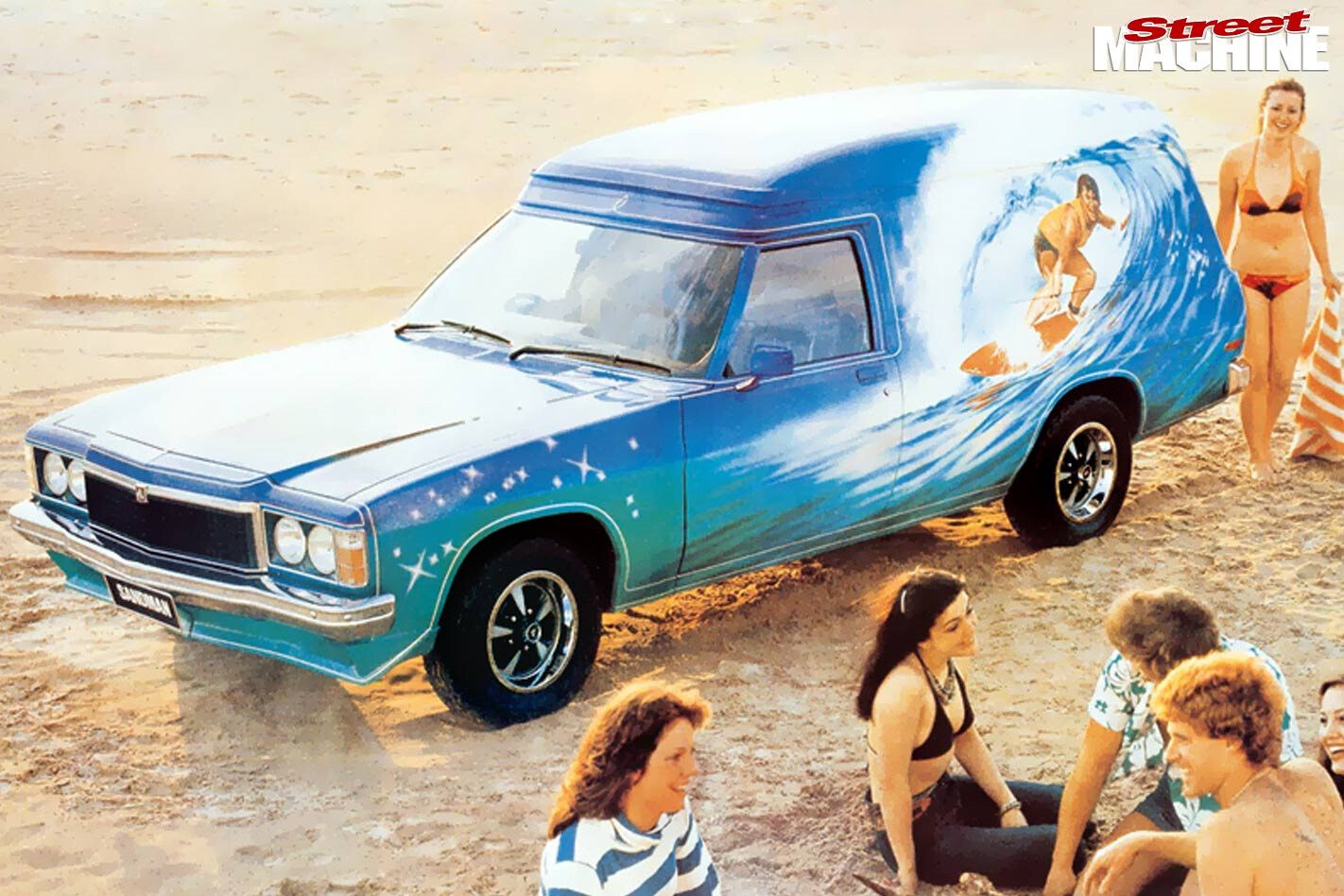
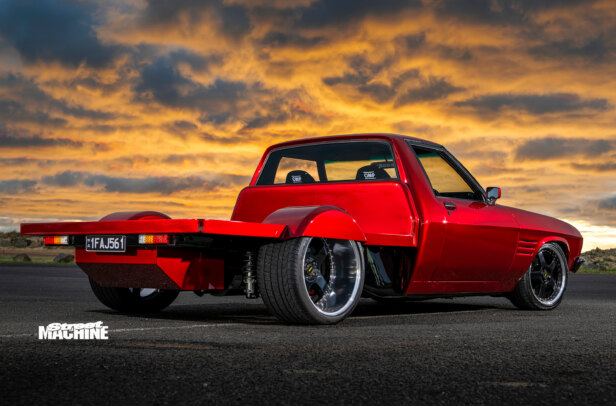
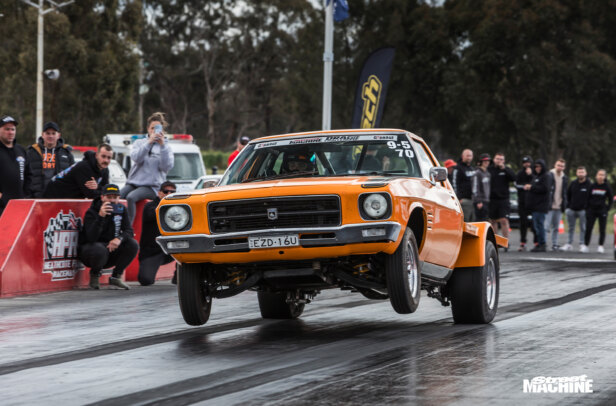
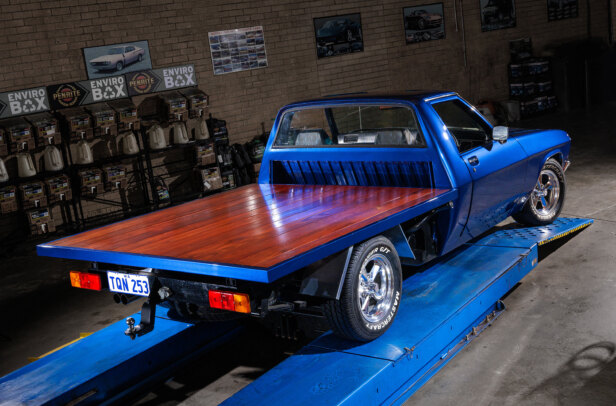
Comments